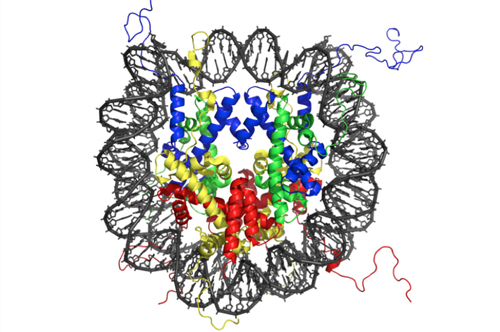Breakthrough in the Understanding of Embryonic Stem Cells
Posted on: 05 December 2012
A significant breakthrough in the understanding of embryonic stem cells has been made by scientists from the Smurfit Institute of Genetics at Trinity College Dublin. The Trinity research group led by Dr Adrian Bracken and funded by Science Foundation Ireland has just published their findings in the leading international journal, Nature Structural & Molecular Biology.
The new research describes the process whereby genes that are ‘on’ in embryonic stem cells are switched ‘off’. This process is essential in order to convert embryonic stem cells into different cell types such as neurons, blood or heart cells and therefore represents an important breakthrough in the area of regenerative medicine.
The research encompasses both embryonic stem cell research and epigenetics. Embryonic stem cell research is focused on a particular type of cell that is capable of generating the various tissues in the body; for example, muscle, heart or brain. It is particularly relevant due to its potential for regenerating diseased tissues and organs and for the treatment of a variety of conditions including Parkinson’s disease, diabetes and spinal cord injury.

DNA wrapped around a structure called a nucleosome. Changes in the 3D structure of DNA are important for turning genes on and off.
Epigenetics explains how cells in your body with exactly the same genes can be so different functionally. For example, a neuron and a muscle cell look and act very differently, yet contain exactly the same genes. The study of epigenetics has helped us understand that every type of cell has its own unique pattern of genes that are either switched ‘on’ or ‘off’. Different types of cells arise therefore due to these differences.
This new research explores the role of a protein termed a ‘Polycomb group protein’ called PHF19 in mouse embryonic stem cells. Gerard Brien, the lead author on the paper, and PhD student in the laboratory of Dr Adrian Bracken demonstrated that without PHF19, embryonic stem cells are incapable of generating specialised cells such as those of the heart, lung or brain. He next established that PHF19 plays a critical role in switching the embryonic stem cell genes from an ‘on’ to an ‘off’ state during conversion into specialised cells. PHF19 does this by reading an ‘epigenetic mark’ called H3K36me3, which is only found on genes that are ‘on’. It then recruits additional ‘Polycomb’ and other proteins, which replace H3K36me3 with another mark, H3K27me3, that is found on genes that are ‘off’.
Commenting on the findings, Dr Bracken stated: “This discovery about PHF19 is an important step forward in our understanding of how stem cells specialise. In addition to its relevance in regenerative medicine, it may also have implications for future cancer therapies. We are also studying a related ‘Polycomb group protein’ called EZH2, which is mutated in lymphoma, a type of blood cancer. Several new drugs have been developed to target EZH2 and treat these patients. Our new results suggest that these patients could also be treated by inhibitors of PHF19. This ongoing work is supported by funding from Science Foundation Ireland”.
For more information see: www.gen.tcd.ie/bracken
The full title of the paper is: ‘Polycomb PHF19 binds H3K36me3 and recruits PRC2 and demethylase NO66 to embryonic stem cell genes during differentiation’.
Nature Structural & Molecular Biology [Published Advanced Online Nov 18th; In the upcoming December 5th issue accompanied by a “News and Views”].
